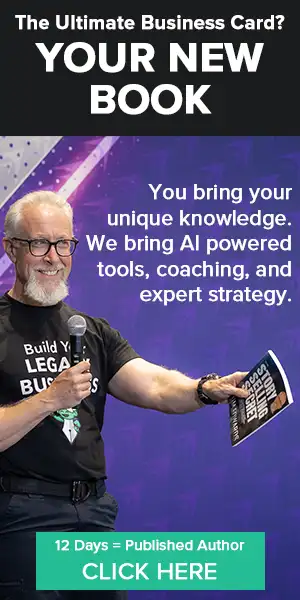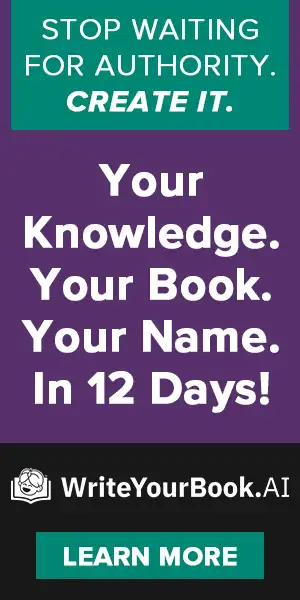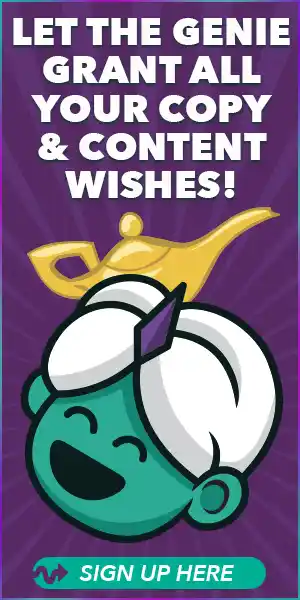Article of the Week
Turn Your “About Me” Page Into A Sales Powerhouse With This Simple Story Trick
 I remember the first time I ever used a story to sell something to someone. I was in the process of redoing my 40-page website into a one-page sales letter website. The trainer who suggested this approach also mentioned using a story in the sales letter, but didn’t specify what type of story to use. Looking back, I realize that his advice was a part of the reason why people paid him. However, as I didn’t have the funds to pay for his services, I had to figure it out on my own.
I remember the first time I ever used a story to sell something to someone. I was in the process of redoing my 40-page website into a one-page sales letter website. The trainer who suggested this approach also mentioned using a story in the sales letter, but didn’t specify what type of story to use. Looking back, I realize that his advice was a part of the reason why people paid him. However, as I didn’t have the funds to pay for his services, I had to figure it out on my own.
The only story that came to mind was my own personal experience about how I had achieved what I was selling in my book. The book was about how to sell your house yourself, something I had successfully accomplished twice within a 30-day period with two different houses. When I incorporated this story into my sales letter, my sales increased by 250% overnight – literally!
Although I used that story on the main sales letter of my website, I also discovered that a similar approach could be implemented on the about me page of a website. Instead of using the about me page as a resume, it can be utilized as a platform to tell your personal story, inspiring potential buyers to become excited about purchasing from you. This approach proved to be highly effective in building a connection with the audience and increasing sales.
Bottom line: telling a great hero’s journey or epiphany bridge story is a powerful way to connect with your audience and inspire them to take action.
By structuring your story effectively, you can craft a compelling narrative that resonates with your listeners and leaves a lasting impact. Here are the essential elements of a memorable hero’s journey or epiphany bridge story for bringing your story to life. Whether you’re a speaker, writer, or storyteller, this checklist will help you hone your story and engage your audience in a meaningful way.
Set The Stage
Identify the protagonist’s (main character) initial state. This can include their desires, fears, and motivations, as well as the challenges they are facing. By understanding where the protagonist is starting from, you can create a compelling narrative that shows their growth and transformation over the course of the story.
Introduce the Catalyst Event
Sometimes referred to as “the call to adventure!” Every hero’s journey or epiphany bridge story begins with a call to adventure, a moment that sets the protagonist on a path of personal growth and transformation. This could be a literal call to action, such as a quest or mission, or a figurative call to adventure, such as a new job or a life-changing experience. By introducing the call to adventure early in the story, you hook the audience and begin the protagonist’s journey.
Conflict Makes a Great Story
A great hero’s journey or epiphany bridge story is all about the protagonist’s struggle (and growth as a result). As the protagonist faces challenges and obstacles, they should experience growth and transformation. This could include learning new skills, overcoming fears, or gaining a new perspective on the world. By showing the protagonist’s struggle and growth, you can create a compelling and relatable story that resonates with the audience.
Highlight The Mentor Or Discovery
In many hero’s journey stories, the protagonist is guided and supported by a mentor or a discovery that helps them on their journey. These can provide wisdom, guidance, or direction, and can help the protagonist overcome obstacles and achieve their goals. By highlighting the mentor or discovery in the story, you add depth and complexity to the journey and create a more compelling narrative.
Build Towards The Climax Or Epiphany Moment
Every good hero’s journey or epiphany bridge story builds towards a climactic moment or epiphany that challenges the protagonist and forces them to confront their inner demons or fears. This moment should be a turning point in the story, where the protagonist undergoes a profound transformation or realization that changes their outlook on life. By building towards the climax, you create a powerful and emotional story that leaves a lasting impact on the audience.
Resolution and transformation
After the climactic moment or epiphany, the protagonist should undergo a transformation that reflects their growth and development over the course of the story. This could include overcoming a final challenge, achieving a long-sought goal, or finding inner peace and acceptance. By showing the protagonist’s transformation, you bring the story to a satisfying and impactful conclusion.
The Journey’s Lessons And Impact
A great hero’s journey or epiphany bridge story should leave the audience with meaningful lessons and insights that resonate long after the story ends. Take the time to reflect on the journey’s impact and the lessons learned by the protagonist, and consider how these insights can apply to the audience’s own lives. By doing so, you create a powerful and resonant story that leaves a lasting impression on the audience.
Whether you do it on your sales page… or the about me page… or even in a blog post… a story like this can change lives and add a whole lot of money to your bottom line at the same time!
And by the way we’ve got AI Genies inside of CopyAndContent.AI that will blow your mind at how good a story you can tell to connect with and resonate with your audience. Check them out at CopyAndContent.AI
Facebook • Instagram • Twitter • LinkedIn • Pinterest • Podcast • TikTok • YouTube • LinkTree







Leave a Reply